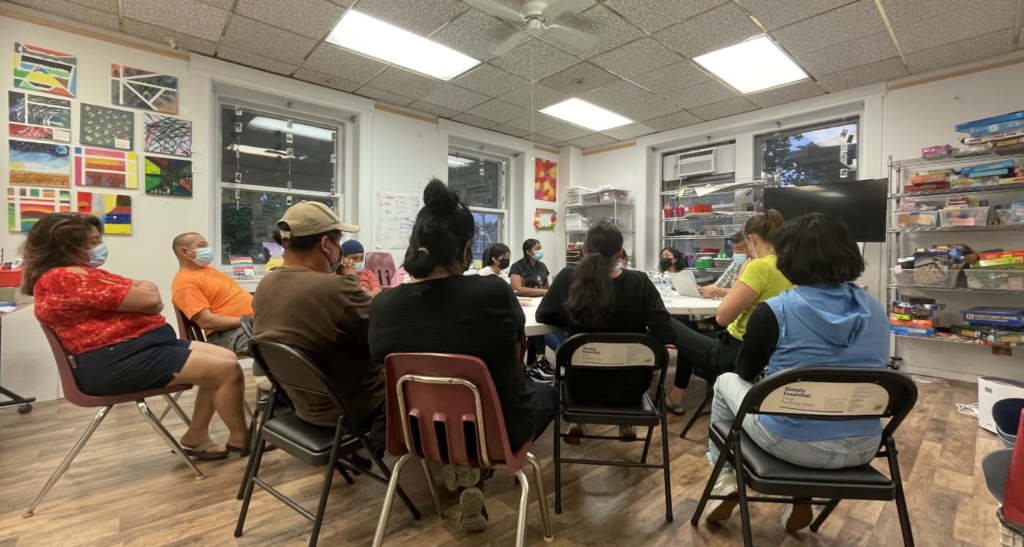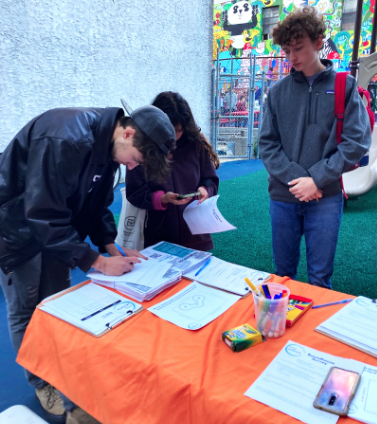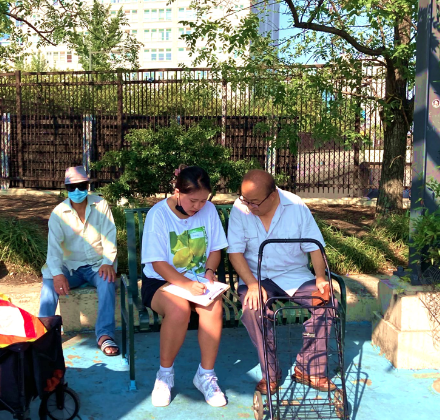28 Mar 3 Successful Strategies for Public Engagement and Outreach
TLDR: A successful public engagement strategy is about many moving pieces that are not always considered such as learning about the needs and abilities of specific neighborhoods and locals removing practical participation barriers, and use of inviting, non-traditional engagement tactics.
Introduction
Successful public engagement and outreach strategies are not always so easily identified. Whether you are involved in urban planning, transportation, or another public engagement process, gathering input from different spectrum of residents and locals often plays a key role in determining effective solutions. However, depending on the public at hand, there may be several practical barriers to participation for stakeholders across the board and successful public engagement and outreach can be difficult to achieve. Many public officials, neighborhood leaders, and public engagement practitioners wonder: How do you get peoples’ voices to the decision making table and support them throughout the outreach, engagement and implementation processes?
In this post, we provide 3 strategies for effective public engagement and outreach that you should consider when approaching local stakeholders. Also watch our free 1-hour webinar, hosted by Connect the Dots Project Manager, Sylvia García-García and Sally Guzik, VP of Strategic Initiatives at Fourth Economy to find out more about tailoring public engagement to the specific needs of your region.
#1 Essential Information About Lived Experiences

Native speakers facilitate focus group conversations surrounding mobility choices among Spanish speaking neighborhood members in Norristown, PA.
At Connect the Dots, we work with a variety of locale across distinct geographies, each with their own unique composition and identity. It is essential to learn more about the practical information about their everyday lived experiences to tailor an effective public engagement and outreach strategy to their needs.
For example, in our recently completed Mobility Choices Study, we partnered with the Delaware Valley Regional Planning Commission (DVRPC) and sought out to learn how Latino and Black members in specific neighborhoods make decisions surrounding transportation choices. This meant that in order to successfully address the needs of these participants, we emphasize the need to learn more about the lives of our audiences on a more granular, personal level to determine the practical barriers to their participation. With guidance from our neighborhood partners, we facilitated a series of “fireside chat” like discussions. These intentional conversations were conducted in small groups and familiar settings in both English and Spanish.
Recognizing that public engagement is not only about language access, but also cultural accessibility, we brought native speakers to the conversations who could organically listen and respond to the concerns and experiences of residents, rather than simply focusing on translation and interpretation services. In addition, many of these public members had children, revealing another barrier to participation. After this need was identified, childcare was provided so parents could fully participate. After enabling the conditions for an enriching exchange, we were able to gather insights that revealed the groups’ mobility choices were based largely on a set of various cultural and economic conditions.
The lesson learned here is that rather than focusing on the end result, crafting a successful engagement and outreach strategy is more about how you put together the many smaller engagement pieces to meet people where they are and fulfill their needs to get their valued feedback.

Example of arts-based tactics where participants use materials to draw their responses to survey questions.
#2 Inform Challenges and Barriers that Need to Be Addressed
From a leadership perspective, you might already have a general understanding of the population. However, this doesn’t mean you don’t need to dig deeper to find the more direct challenges, barriers, cultural nuances, and additional pockets of needs that might diverge from the standard approach.
It’s important to hear from not only residents, but also business owners, grassroots organizers, and direct service providers that have a real time understanding of the needs of the neighborhood. Below are some of the antidotes to the commonly known challenges and barriers to participation that we encounter:
- Ensuring event spaces are accessible via public transit.
- Offering 1-1 conversations or office hours, rather than only a large meeting format.
- Setting up events with less pressure for a formalized and mandated atmosphere.
- Leveraging technology to circumvent child care, elderly and transportation limitations, offering more participation opportunities in terms of time.
- Considering barriers such as childcare needs, stipends, translation or interpretation services.
Understanding when to use one or multiple tactics is really important and must be tailored to the needs of the neighborhood at hand. Public engagement and outreach is not only a one off interaction, where you host an event, collect information and it ends. It is a recurring process that should be more about bringing people along with the overall decision making process. Consider the following questions when devising your engagement and outreach strategy:
- How are you communicating what is the purpose of the engagement?
- What are the follow up and next steps given so stakeholders understand how and where they can continue to be a part of the decision making process?
#3 Gain an Understanding of Local and Cultural Context

Example of a tailored techniques that combined 1-1 conversations and survey applications at a large public events to better engage the neighborhood of Chinatown.
Gaining an understanding of local and cultural context means that people can relate and see themselves in the message that your public engagement and outreach strategy is putting out there. For example, Connect the Dots partnered with the City of Philadelphia for a placemaking project at a site known as the Roundhouse Building. Located in the Chinatown neighborhood, we tailored our engagement techniques specifically for the local and cultural context of the neighborhood.
This meant that our staff included people who were representative of the audience we were engaging with, and in this case, who also served as interpreters during large public events. This approach enabled us to create a more personalized space within a busy urban setting. In other cases, it might be:
- Considering alternatives to traditional engagement methods such as surveys.
- Considering different cognitive abilities, age ranges, or cultural preferences.
For this same project, we used a variety of arts-based mural and paper lantern activities, where people could draw and paint to express their ideas. The main takeaway is to use what you know about your target audiences and tailor a space that lets you reach them. Not only in terms of just language access or certain abilities, but more about creating different layers that when combined make engagement accessible and respectful of everyone’s resources and abilities.
Closing
Crafting a successful public engagement and outreach strategies involve a lot of careful planning and thinking beyond traditional avenues of communication. Overall if you can take the time to gather more information about your intended audience and learn more about the roadblocks to their participation, together with a more nuanced approach to engagement tactics, you will be more likely to achieve deeper and more useful insights.
If you are looking to learn more about what successful public engagement and outreach looks like, watch the “Connecting Voices to Decision Making Webinar” today to find out how it can be successfully implemented to tackle the unique challenges in your region. Stay tuned by subscribing to our company newsletter or following our company page on LinkedIn for future insights!
___

Robby Alva is a Public Engagement Associate at Connect the Dots. He graduated with a joint Master’s degree in Urban Studies from the Universities of Brussels, Vienna, Copenhagen and Madrid. Inquisitive and resourceful, he is passionate about centering inclusion and resident perspectives, and is motivated by the desire to learn and understand human behavior to improve quality of life in urban neighborhoods. Connect with Robby on Linkedin

Sylvia García García is a Project Manager at Connect the Dots. A Social Impact Strategist and Welcoming Spaces Creator, she runs a variety of stakeholder and public engagement projects. Sylvia holds a Master’s in Strategic Thinking from Tec de Monterrey and has since worked as a consultant and project manager across sectors and countries. Connect with Sylvia on Linkedin
